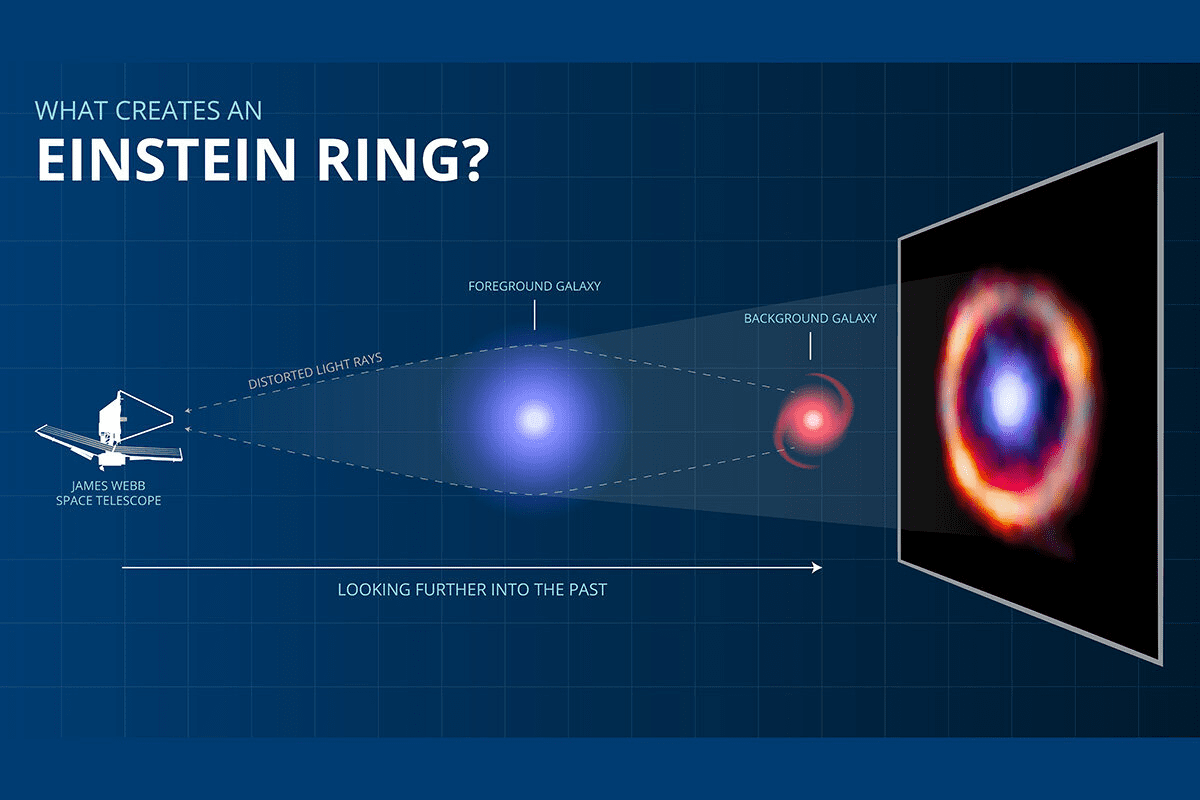Through a combination of gravitational bending of light and the extraordinary power of the JWST, scientists have detected polycyclic aromatic hydrocarbons (PAHs) in a galaxy 12 billion light-years from Earth. We are seeing the galaxy SPT0418-47 as it was when the universe was a tenth of its current age, and the observations show it was already enriched in heavy elements and fairly complex molecules.
When we find PAHs on Earth it’s usually a bad sign. This set of compounds is produced by forest fires and in the exhaust fumes of engines, although some of them do have uses as insecticides and precursors for other molecules. Finding them in space is a very different matter, as they indicate important chemical processes and some of the ingredients required to make life.
Finding PAHs in our own galaxy has become routine, but the early universe is a different matter. Now a new paper has changed that. Moreover, the work has gone far beyond mere detection. By mapping the distribution of PAHs in SPT0418-47 the paper reveals infrared emissions from a dusty galaxy like this were dominated by star formation.
Half the radiation stars emit is absorbed by dust grains, which are heated in the process and re-emit the energy in the infrared, where the JWST can detect them. PAHs follow the distribution of millimeter-sized dust grains in space, and can act as a proxy to reveal their presence. They also regulate the cooling of gas between star systems.
The atmosphere interferes with Earth-based observations in the infrared, and before the JWST space telescopes lacked the power study PAH’s distribution in very distant galaxies. Along with the JWST, the paper’s authors, including University of Illinois Urbana-Champaign graduate student Kedar Phadke and Professor Joaquin Vieira, used an extreme example of gravitational lensing, where a large mass focuses light from a more distant object to magnify it.
SPT0418-47 is gravitationally lensed by a closer galaxy to look 30-35 times as large and bright as it would without the lensing. Only the combination of such an extreme lensing event and the power of the JWST allows us to see such a distant galaxy so clearly around the 3.3-micrometer wavelength, at which PAHs radiate.

SPT0418-47 is perfectly lined up with a galaxy three quarters of the way to Earth to create an Einstein Ring.
Image credit: S. Doyle / J. Spilker
“What this research is telling us right now – and we are still learning – is that we can see all of the regions where these smaller dust grains are located – regions that we could never see before the JWST,” said Phadke in a statement.
The distribution of PAHs and small grains reveals a different pattern from the larger dust grains responsible for far-infrared emissions, with ratios between them varying by a factor of five.
It also reveals that most of the infrared radiation from SPT0418-47 does not come from the accretion disk around the black hole, as is the case for quasars, but is emitted by stars.
“We didn’t expect this,” Vieira said. “Detecting these complex organic molecules at such a vast distance is game-changing regarding future observations. This work is just the first step, and we’re just now learning how to use it and learn its capabilities. We are very excited to see how this plays out.”
One thing we don’t yet know is whether SPT0418-47 is typical of galaxies of this era in the ways measured, or an outlier. To answer that question, we’ll need to either find a lot more galaxies with a conveniently placed closer galaxy that can gravitationally lens them for us, or build a telescope even more powerful than the JWST.
The study is published in Nature.
Source Link: JWST Detects Complex Organic Molecules 12 Billion Light-Years Away